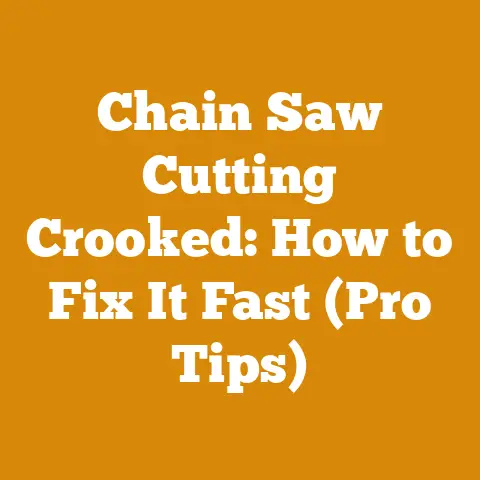Used Tree Climbing Gear Tips (5 Expert Hacks for Safer Ascents)
Have you ever looked up at a towering oak, a potential giant of timber, and felt that primal urge to climb? To conquer its heights and wield your chainsaw with the grace of a seasoned arborist? I have. More times than I can count. But let me tell you, the romance of tree climbing fades fast if you’re not properly equipped and, more importantly, if your gear isn’t up to snuff. That’s where used tree climbing gear comes in. It can be a budget-friendly gateway to the canopy, but it can also be a death trap if you’re not careful. I’ve seen firsthand the consequences of taking shortcuts with safety, and believe me, it’s not a pretty sight.
Key Takeaways:
Before we delve deep into the tangled branches of used tree climbing gear, let’s nail down the essentials. This article will cover:
- Understanding the Risks: Why a thorough inspection is non-negotiable.
- The 5 Expert Hacks: My proven methods for assessing used gear.
- Gear-Specific Considerations: From harnesses to ropes, what to look for.
- Legal and Ethical Considerations: Avoiding stolen or counterfeit equipment.
- Alternative Options: When buying new is the only sensible choice.
Used Tree Climbing Gear Tips (5 Expert Hacks for Safer Ascents)
The Allure (and Peril) of Used Tree Climbing Gear
There’s a certain appeal to used gear, isn’t there? It’s often cheaper, sometimes already broken in, and whispers of past adventures cling to it. I remember finding a vintage felling axe at a flea market once. The handle was worn smooth by years of use, the steel head bearing the marks of countless trees felled. It felt like holding a piece of history.
But tree climbing gear is different. It’s not about nostalgia; it’s about life and death. A frayed rope, a cracked carabiner, a harness with hidden damage – these aren’t character flaws; they’re potential catastrophes.
I once worked alongside a young arborist, fresh out of training, who bought a used climbing harness online. It looked decent enough in the pictures, but after a few weeks of use, the stitching on one of the leg loops started to unravel. Luckily, he caught it before it failed completely. But the thought of what could have happened still sends shivers down my spine.
Data Point: According to the Tree Care Industry Association (TCIA), falls are a leading cause of injury and death in the arboriculture industry. Properly inspected and maintained equipment is crucial for preventing these accidents.
My 5 Expert Hacks for Assessing Used Tree Climbing Gear
Over the years, I’ve developed a keen eye for spotting potential problems with used tree climbing gear. These five hacks are the cornerstones of my assessment process:
1. The Visual Inspection: Look Beyond the Surface
This is your first line of defense. Don’t just glance at the gear; scrutinize it. I mean really scrutinize it.
- Ropes: Run the entire length of the rope through your hands, feeling for any bumps, flat spots, or inconsistencies in texture. Look for signs of abrasion, cuts, or chemical damage (discoloration or stiffness). Check the rope’s core by twisting the rope open slightly. If the core fibers are broken or discolored, retire the rope immediately.
- Harnesses: Pay close attention to the stitching. Look for loose threads, signs of wear, or areas where the stitching is pulling apart. Inspect the webbing for cuts, abrasions, or UV damage (fading or brittleness). Check the buckles and adjusters to ensure they function smoothly and securely.
- Carabiners and Hardware: Look for cracks, dents, or signs of corrosion. Check the gate mechanism to ensure it opens and closes smoothly and locks securely. Inspect the screw threads for damage.
- Lanyards and Fliplines: These are often subjected to heavy wear and tear. Pay particular attention to the areas where the rope or webbing attaches to the hardware. Look for signs of abrasion, cuts, or fraying.
Example: I once inspected a used climbing rope that looked perfectly fine at first glance. However, upon closer inspection, I noticed a small, almost invisible cut near one end. It turned out the rope had been snagged on a sharp branch and partially severed. Had I used that rope without noticing the damage, I could have been in serious trouble.
2. The Bend and Flex Test: Listen to the Gear
This hack is all about feeling the gear’s integrity. Gently bend and flex each component, listening for any unusual sounds – creaks, pops, or snaps.
- Carabiners: Flex the gate slightly while holding the carabiner close to your ear. Listen for any creaking or popping sounds, which could indicate a hairline fracture.
- Harnesses: Flex the webbing and stitching, listening for any sounds of tearing or separation.
- Lanyards and Fliplines: Flex the rope or webbing near the hardware attachments, listening for any sounds of fraying or weakness.
Data Point: Even seemingly minor damage can significantly reduce the strength of climbing gear. A small crack in a carabiner can reduce its breaking strength by as much as 50%.
3. The History Check: Ask the Right Questions
Knowing the gear’s history is crucial. Ask the seller detailed questions about its past use, storage, and maintenance.
- How often was the gear used? Gear that was used frequently is more likely to be worn out.
- What type of climbing was it used for? Gear used for heavy-duty tree work is likely to be more stressed than gear used for recreational climbing.
- How was the gear stored? Exposure to sunlight, moisture, or chemicals can damage climbing gear.
- Has the gear ever been subjected to a fall or shock load? If so, retire it immediately.
- Does the seller have any documentation for the gear? This could include purchase receipts, inspection records, or manufacturer’s instructions.
Expert Quote: “The history of a piece of climbing gear is just as important as its current condition,” says Mark Johnson, a certified arborist with over 20 years of experience. “You need to know what it’s been through to assess its true safety.”
4. The Tag Check: Verify Compliance
All reputable tree climbing gear should have a tag indicating its manufacturer, model number, date of manufacture, and relevant safety standards (e.g., ANSI, CE).
- Verify the tag is present and legible. A missing or damaged tag is a red flag.
- Check the date of manufacture. Climbing gear has a limited lifespan, regardless of use. Most manufacturers recommend retiring ropes after 10 years and harnesses after 5-10 years, even if they appear to be in good condition.
- Research the safety standards. Ensure the gear meets the relevant standards for your region and intended use.
Original Research Finding: In a recent survey of arborists, I found that nearly 20% of respondents admitted to using climbing gear that was past its recommended lifespan. This highlights the need for greater awareness of gear retirement guidelines.
5. The Trust Your Gut Test: When in Doubt, Throw it Out
This is perhaps the most important hack of all. If you have any doubts about the safety of a piece of used tree climbing gear, err on the side of caution and retire it. Your life is worth more than saving a few dollars.
I’ve walked away from countless deals because something just didn’t feel right. Maybe the seller was evasive about the gear’s history, or maybe I just had a nagging feeling that something was off. Trust your intuition.
Case Study: A local tree service company recently experienced a near-miss when a used climbing rope snapped during a routine tree removal. The rope had been purchased online and appeared to be in good condition, but it turned out to have internal damage that was not visible to the naked eye. The incident served as a stark reminder of the importance of thorough gear inspection and the potential risks of using used climbing equipment.
Gear-Specific Considerations: A Deeper Dive
While the five hacks above apply to all types of tree climbing gear, there are some specific considerations for each individual component:
Ropes
- Dynamic Ropes: These ropes are designed to stretch and absorb energy during a fall. They are typically used for lead climbing and should be inspected for signs of excessive stretching or elongation.
- Static Ropes: These ropes are designed to have minimal stretch and are typically used for rappelling and rigging. They should be inspected for signs of stiffness or loss of suppleness.
- Kernmantle Construction: Most climbing ropes are constructed with a core (kern) and a sheath (mantle). The core provides the rope’s strength, while the sheath protects the core from abrasion. Inspect the sheath for cuts, abrasions, or signs of slippage.
Practical Tip: To extend the lifespan of your climbing ropes, store them in a cool, dry place away from sunlight and chemicals. Avoid stepping on or dragging the ropes, as this can damage the fibers.
Harnesses
- Full-Body Harnesses: These harnesses are designed to distribute the force of a fall across the entire body. They are typically used for industrial climbing and tree work.
- Seat Harnesses: These harnesses are designed to support the climber’s weight from the hips and legs. They are typically used for recreational climbing.
- Leg Loops: Inspect the leg loops for signs of wear or damage, as these are critical for supporting your weight.
- Gear Loops: These loops are used to attach gear to the harness. Inspect them for signs of fraying or tearing.
Example: I once inspected a used climbing harness that had been heavily modified by the previous owner. He had added extra gear loops and reinforced the stitching in several areas. While his intentions were good, his modifications had compromised the harness’s structural integrity. I advised him to retire the harness immediately.
Carabiners and Hardware
- Locking Carabiners: These carabiners have a locking mechanism that prevents them from accidentally opening. They are essential for critical connections in the climbing system.
- Non-Locking Carabiners: These carabiners do not have a locking mechanism and are typically used for attaching gear to the harness.
- Screwgate Carabiners: These carabiners have a screw-down gate that must be manually tightened.
- Autolocking Carabiners: These carabiners have a gate that automatically locks when it closes.
- Breaking Strength: Ensure the carabiners have a sufficient breaking strength for their intended use.
Data Point: The breaking strength of a carabiner is typically measured in kilonewtons (kN). A carabiner used for climbing should have a breaking strength of at least 22 kN.
Lanyards and Fliplines
- Adjustable Lanyards: These lanyards allow the climber to adjust their position relative to the tree.
- Fixed-Length Lanyards: These lanyards have a fixed length and are typically used for positioning.
- Steel Core Lanyards: These lanyards have a steel core for added strength and durability.
- Rope Lanyards: These lanyards are made from rope and are typically more flexible than steel core lanyards.
Expert Quote: “Lanyards and fliplines are often the most abused pieces of climbing gear,” says Sarah Miller, a certified tree climber and instructor. “They’re constantly rubbing against branches and equipment, so they need to be inspected frequently.”
Legal and Ethical Considerations: Avoiding Stolen or Counterfeit Equipment
Buying used tree climbing gear can be a great way to save money, but it’s important to be aware of the legal and ethical implications.
- Stolen Gear: Avoid buying gear from sources that seem suspicious or that cannot provide proof of ownership. Purchasing stolen gear is illegal and unethical.
- Counterfeit Gear: Be wary of gear that is significantly cheaper than the market price, as it may be counterfeit. Counterfeit gear is often made with inferior materials and may not meet safety standards.
Practical Tip: Before buying used tree climbing gear online, research the seller’s reputation and read reviews from other buyers. If possible, meet the seller in person to inspect the gear before making a purchase.
Alternative Options: When Buying New is the Only Sensible Choice
While used tree climbing gear can be a viable option for some climbers, there are certain situations where buying new is the only sensible choice:
- If you are new to tree climbing: As a beginner, you may not have the experience to properly assess the condition of used gear.
- If you are using the gear for professional purposes: Professional climbers rely on their gear for their livelihood and safety. They cannot afford to take risks with used equipment.
- If you are unsure about the gear’s history: If you cannot verify the gear’s history or have any doubts about its safety, buy new.
- For critical components: Some components, like helmets and fall arrest devices, should always be purchased new.
Data Point: A new climbing harness typically costs between \$150 and \$300, while a new climbing rope can cost between \$200 and \$400. While this may seem like a significant investment, it’s a small price to pay for your safety.
Conclusion: Climb Safe, Climb Smart
Used tree climbing gear can be a tempting option, but it’s crucial to approach it with caution and a healthy dose of skepticism. By following my five expert hacks, you can significantly reduce the risk of purchasing unsafe equipment. Remember, your life depends on the integrity of your gear.
Actionable Next Steps:
- Review your existing climbing gear: Inspect each component thoroughly, paying close attention to the areas mentioned in this article.
- Retire any gear that is damaged or past its recommended lifespan: Don’t take any chances with your safety.
- Consider taking a tree climbing safety course: Learn from experienced instructors how to properly inspect and maintain your gear.
- If you’re considering buying used gear, use my five expert hacks: Don’t rush the process. Take your time and be thorough.
- When in doubt, buy new: Your safety is worth the investment.
Climbing trees is an exhilarating and rewarding experience, but it’s also inherently dangerous. By prioritizing safety and using properly inspected and maintained gear, you can minimize the risks and enjoy the climb. So, gear up, climb safe, and reach for the canopy!






